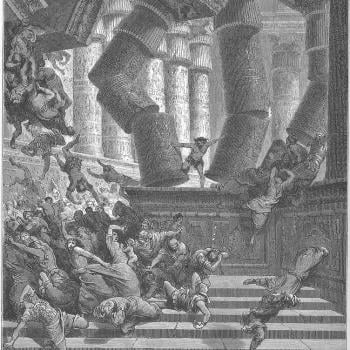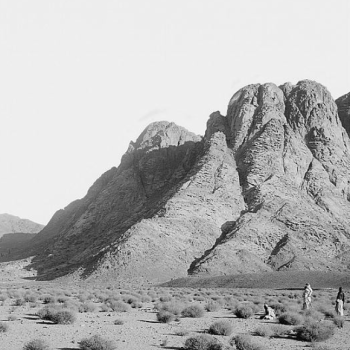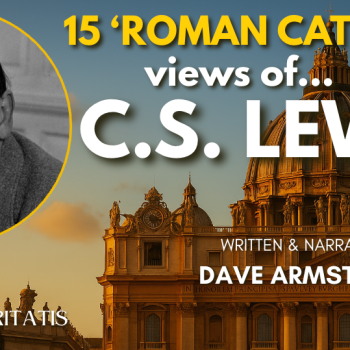
This is the transcript for the seven-minute documentary, Science & the Search for the Garden of Eden (5-10-25), by myself and Kenny Burchard (artwork and production) on our YouTube channel, Lux Veritatis (commenced on 5-1-25). Please visit and subscribe, comment, like, and share. We’re just getting started, and have big, big plans!
Our documentary video, C. S. Lewis On Why He Never Became a Catholic [7 minutes, 5-12-25] has pretty much gone viral, with now 70,522 views in just a week’s time, and we are up to 1,458 subscribers over that same time period. I hope you come join us! We plan on covering many topics, of potential interest to a wide sector of the population. It’s apologetics utilizing science, philosophy, reason, logic, and the current cutting-edge social media technology.
*****
Everyone has heard of the Garden of Eden: the paradise with Adam and Eve, the first human beings made in the image of God. Is it merely a fairy tale and a myth? Perhaps surprisingly, the Bible in its first book of Genesis provides intriguing historical and geographical information — in a way very unlike mythology — making it possible to make a very educated guess as to where Eden may have been located. These fascinating tidbits are found in Genesis 2:10-14 (I use the RSV):
A river flowed out of Eden to water the garden, and there it divided and became four rivers. The name of the first is Pishon; it is the one which flows around the whole land of Havilah, where there is gold; . . . bdellium and onyx stone are there. The name of the second river is Gihon; it is the one which flows around the whole land of Cush. And the name of the third river is Tigris, which flows east of Assyria. And the fourth river is the Euphrates.
Note that the text names four rivers, two of them, very well-known today, two types of minerals, a gum-resin (bdellium), and three place-names. These are the ten starting-points for our quest for Eden: if indeed it was a real place that existed in time and space.
The Tigris and Euphrates rivers meet about 121 miles north of the Persian Gulf and flow into it, in a river called the Shatt al-Arab, in Mesopotamia or present-day Iraq. But what can we learn about the Pishon and Gihon rivers in the text? As to the first, it was discovered in the mid-1990s through satellite images that there used to be a long river in Arabia and Kuwait, which was located in the current dry riverbed called Wadi al-Batin.
In the past it flowed into the Tigris and Euphrates basin north of the Iraqi town of Umm Qasr, as evidenced by a delta plain of cobbles and smooth pebbles including basalt and granite, which are found in abundance in western Arabia. It’s believed that this river dried up around 2000 BC, as the climate of Saudi Arabia turned hyper-arid. We know that the same thing happened in the Sahara Desert in Africa, around 4000 BC.
Satellite photos revealed that this river extended westward into Arabia, with several branches; one of which extends to the area of the Mahd adh Dhahab gold mine, still identifiable today in northwest Saudi Arabia near the Red Sea. Gold has been mined there since around 3000 BC, and it was once one of the richest gold mines in the world. Havilah is thought by scholars to be in the northern deserts of Arabia.
There are many onyx quarries to this day in Saudi Arabia. Likewise, bdellium, a gum-resin like frankincense and myrrh, also grew in ancient Arabia.
This leaves us with the Gihon River. What can we find out about that? Cush in this passage has been identified by several scholars with the Kashshi, or Kassites, who came from what is now western Iran. They conquered Babylonia in the seventeenth century B.C., and ruled over it for several hundred years. The only navigable river in Iran is the Karun river.
The Hebrew word translated as “flows around” in the RSV is sabab, [saw-bab] translated as “compasseth” in the King James Version, so in this verse it means to “surround” or “encompass” or “wind around” the land in which it flows. This is true of the Karun which twists and turns throughout its 510 miles, covering only a distance of 175 miles from a bird’s eye view. The Karun flows into the Shatt al-Arab 68 miles south of where the Tigris and Euphrates rivers meet, and 53 miles north of the Persian Gulf.
To sum up, then, the Bible states that a river “flowed out of Eden” and “divided” and “became four rivers. We have now plausibly identified all four and we know that a single large river that they all flow into, empties into the Persian Gulf. Thus, the Garden of Eden would have existed alongside or on both sides of this river, called the Shatt al-Arab. But things get more complicated when we learn that the borders and sea level of the Persian Gulf have changed.
In a scientific article on this topic (linked in the intro.) by Kurt Lambeck, he stated, “The present shoreline was reached shortly before 6000 years ago and exceeded as relative sea level rose l-2 meters above its present level, inundating the low-lying areas of lower Mesopotamia.”
So it may very well be that the Garden of Eden was in a location now under the waters of the northern Persian Gulf, or not far north of the present shore. In either case, the landscape and environment have vastly changed, as it has in many regions, particularly in the Near East. The Bible provides us with many specific clues that lead us to the general area where it was.
Sources
Dave Armstrong, The Word Set in Stone: How Archaeology, Science, and History Back Up the Bible (Catholic Answers Press: March 15, 2023, 271 pages); see chapter 1: pp. 19-28.
[Geologist] Carol A. Hill, “The Garden of Eden: A Modern Landscape,” Perspectives on Science and Christian Faith 52 (March 2000), 31–46.
[Archaeologist] James Sauer, “The River Runs Dry: Creation Story Preserves Historical Memory,” Biblical Archaeology Review 22:4 (1996), 52–57, 64.
“Mahd adh Dhahab” [“Cradle of Gold”], Wikipedia.
“Havilah,” Jewish Encyclopedia (1906).
“Bdellium,” Jewish Encyclopedia (1906).
“Karun [River]”, Wikipedia.
“Karun and Shatt Al-Arab River System: Historic and Modern Attempts to Manage Iran’s Lifeline,” Kenneth Ray Olson, Sergey Stanislavovich Chernyanskii, Open Journal of Soil Science, Vol.14 No.7, July 2024.
“Shoreline reconstructions for the Persian Gulf since the last glacial maximum,” Kurt Lambeck, Earth and Planetary Science Letters 142 ( 1996) 43-57.
Photo Credit: copyright Lux Veritatis, 2025.
Summary: I dig deep into Genesis 2:10–14 and utilize satellite imagery, archaeological findings, and linguistic evidence to investigate one of the Bible’s most fascinating mysteries.













